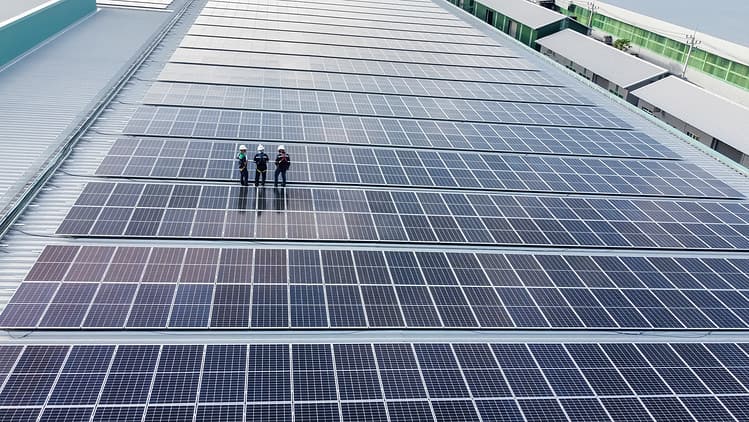
DETROIT — The head of the National Transportation Safety Board has expressed concern about the safety risks that heavy electric vehicles pose if they collide with lighter vehicles.
The official, Jennifer Homendy, raised the issue in a speech Jan. 11 in Washington to the Transportation Research Board. She noted, by way of example, that an electric GMC Hummer weighs about 9,000 pounds, with a battery pack that alone is 2,900 pounds — roughly the entire weight of a typical Honda Civic.
“I’m concerned about the increased risk of severe injury and death for all road users from heavier curb weights and increasing size, power and performance of vehicles on our roads, including electric vehicles,” Homendy said in remarks prepared for the group.
The extra weight that EVs typically carry stems from the outsize mass of their batteries. To achieve 300 or more miles of range per charge from an EV, batteries have to weigh thousands of pounds.
People are also reading…
Some battery chemistries being developed have the potential to pack more energy into less mass. But for now, there’s a mismatch in weight between EVs and smaller internal combustion vehicles. EVs also deliver instant power to their wheels, accelerating faster in most cases than most gas-powered cars, trucks and SUVs.
Homendy said she was encouraged by the Biden administration’s plans to phase out carbon emissions from vehicles to deal with the climate crisis. But she said she still worries about safety risks resulting from a proliferation of EVs on roads and highways.
“We have to be careful that we aren’t also creating unintended consequences: More death on our roads,” she said. “Safety, especially regarding new transportation policies and technologies, cannot be overlooked.”
Homendy noted that Ford’s F-150 Lightning EV pickup is 2,000 to 3,000 pounds heavier than the same model’s combustion version. The Mustang Mach E electric SUV and the Volvo XC40 EV, she said, are roughly 33% heavier than their gasoline counterparts.
“That has a significant impact on safety for all road users,” Homendy said.
The NTSB investigates transportation crashes but has no authority to make regulations. For vehicles, such authority rests largely with the National Highway Traffic Safety Administration.
Even apart from EVs, the nation’s roads are crowded with heavy vehicles, thanks to a decade-long boom in sales of larger cars, trucks and SUVs that’s led to extreme mismatches in collisions with smaller vehicles. But electric vehicles are typically much heavier than even the largest trucks and SUVs that are powered by gasoline or diesel.
Michael Brooks, executive director of the nonprofit Center for Auto Safety, said he, too, is concerned about the weight of EVs because buyers seem to be demanding a range of 300 or more miles per charge, requiring heavy batteries.
Brooks said that setting up a charging network to accommodate that may be a mistake from a safety perspective.
“These bigger, heavier batteries are going to cause more damage,” he said. “It's a simple matter of mass and speed.”
Brooks said he knows little about the safety risks of increasing vehicle weights. In 2011, the National Bureau of Economic Research published a paper that said being hit by a vehicle with an added 1,000 pounds increases by 47% the probability of being killed in a crash.
He points out that electric vehicles have high horsepower ratings, allowing them to accelerate quickly even in crowded urban areas. “People are not trained to handle that type of acceleration. It's just not something drivers are used to doing,” Brooks said.
Also, many newer electric SUVs are tall with limited visibility that poses risks to pedestrians or drivers of smaller vehicles, he said.
Sales of new electric vehicles in the U.S. rose nearly 65% last year to 807,000 — about 5.8% of all new vehicle sales. The Biden administration has set a goal of having EVs reach 50% of new vehicle sales by 2030 and is offering tax credits of up to $7,500 to get there. The consulting firm LMC Automotive has made a more modest prediction: It expects EVs to make up one-third of the new-vehicle market by 2030.
10 states with the biggest increase in electric vehicle charging stations since 2020

#10. Rhode Island

Rhode Island had 2,550 registered electric vehicles as of Dec. 31, 2021. This total could have been influenced by the Electrify RI charging station incentive, which ended in July 2021. That program used $1.4 million to install a series of EV charging stations throughout the state. However, Rhode Island's dedication to zero-emission vehicles does not stop at cars: Its Public Transit Authority is also piloting an electric bus system.
#9. Utah

Utah had 16,480 registered electric vehicles at the beginning of 2022. Various incentives have been introduced to encourage the purchase of electric vehicles and their charging stations.
Among these are Rocky Mountain Power's Residential Electric Vehicle Charging Station rebate, which returns $200 to individuals who install a charging station. Together with seven other Western states, Utah is part of the Intermountain West Electric Vehicle Corridor, which will facilitate EV travel through those states' major highways. Uniquely, Utah offers tax credits for residents who buy heavy-duty electric cars, while most other states only do so for light EVs.
#8. Delaware

Delaware's 3,010 registered EVs will likely rise in coming years as incentive programs in the state take hold. The Delaware Clean Vehicle Rebate program encourages citizens to buy or lease zero-emission vehicles. Under the program, anyone who has bought or leased an EV is eligible for anywhere from $1,000 to $2,500 in return. This includes battery and plug-in EVs and vehicles running on propane or natural gas. The program is in effect until Dec. 31, 2022.
#7. Arizona

Arizona took advantage of the IIJA quickly, becoming one of the first states to approve its plans for installing and accommodating additional electric charging stations. The state currently has 40,740 registered electric vehicles.
Over the coming year, Arizona will have access to $27.6 million to begin implementing EV infrastructure, with a remaining $48.9 million available over the next five years. The Arizona Department of Transportation will designate Alternative Fuel Corridors and new charging stations. Existing stations will also be updated, with key locations continually identified.
#6. Missouri

Missouri's electric vehicle inventory sits at 10,050, with infrastructure in place to encourage growth. The state's Electric Vehicle Charging Station Grants fund the installation of charging stations through the Missouri Department of Natural Resources. Ameren, Evergy, and Kirkwood Electric all offer rebates for the purchase and installation of charging stations.
Missouri has begun working with the National Electric Highway Coalition to optimize the use of these stations. Stations will be strategically installed along major Missouri highways to enable long-distance travel by electric vehicle.
#5. Alaska

Alaska's small number of 1,290 registered electric vehicles can be attributed to its small population, but its plethora of zero-emission incentive programs may change that. Under the Residential Electric Vehicle Charging Station Credit and Commercial Rebates partner program, Alaskans who install EV charging stations can be reimbursed by the Chugach Electric Association.
Individuals can receive $200 per station, and commercial customers can receive rebates ranging from $1,000 to $5,000 per station. Alaska Power and Telephone repays $1,000 to individuals who have purchased an electric vehicle. Alaska Electric Light & Power also provides EV owners a Time of Use-based rebate.
#4. California

California holds the record for the country's highest number of registered electric vehicles. At 563,070 EVs registered as of December 2021, the state is home to around 39% of all EVs in the country.
California has also laid out the most ambitious plans to encourage the use of electric vehicles. By 2035, new gasoline-powered cars will no longer be available, marking a total switch to zero-emission vehicles. To achieve this, vehicle manufacturers will have to increase the percentage of electric models produced to 35% in 2026, 68% in 2030, and 100% in 2035.
#3. Nebraska

Though Nebraska may only have 2,710 registered electric vehicles, its many incentive programs will hopefully increase that number in the coming years. Around $6 million a year will be available to the state government for the next five years to build additional charging stations. These will be installed along designated AFCs, encompassing Interstate 80, Highway 31, and Highway 6.
Programs such as the Alternative Fuel Vehicle and Fueling Infrastructure Loans and the All-Electric Vehicle and EV Charging Station Rebates will allow individuals and corporations to take advantage of new EV-focused infrastructure. Loans and rebates ranging from $500 to $500,000 will encourage purchasing charging stations, batteries, and vehicles.
#2. Michigan

It makes sense that Michigan would lead the way in transformative policies for vehicles, considering it is the vehicle manufacturing capital of the U.S. The state's 17,460 registered electric vehicles stand to grow once several planned EV infrastructures are implemented. Gov. Gretchen Whitmer recently announced that Gotion and Our Next Energy would build EV battery plants worth around $4 billion in Big Rapids and Wayne County.
Initiatives like the Charge Up Michigan Placement Project and Alternative Fuel Vehicle Emissions Inspection Exemption incentivize individuals to opt for electric vehicles. Michigan has also made efforts to drum up excitement around electric vehicles with events like electric vehicle ride-and-drives, where locals can test drive EVs.
#1. Massachusetts

Massachusetts' most recent number of registered electric vehicles came in at 30,470. Considering the state had the largest increase in charging stations since 2020, this number can only be expected to grow in the coming years.
Massachusetts has multiple incentive programs to help bolster these numbers, particularly from Massachusetts Offers Rebates for Electric Vehicles. This allows individuals and businesses who have recently purchased electric vehicles to apply for $4,000 in rebates and battery funds. Additionally, through the Massachusetts Department of Environmental Protection Electric Vehicle Incentive Program, employers can have up to 60% of the funding covered to install electric vehicle charging stations.
This story originally appeared on The General and was produced and distributed in partnership with Stacker Studio.




